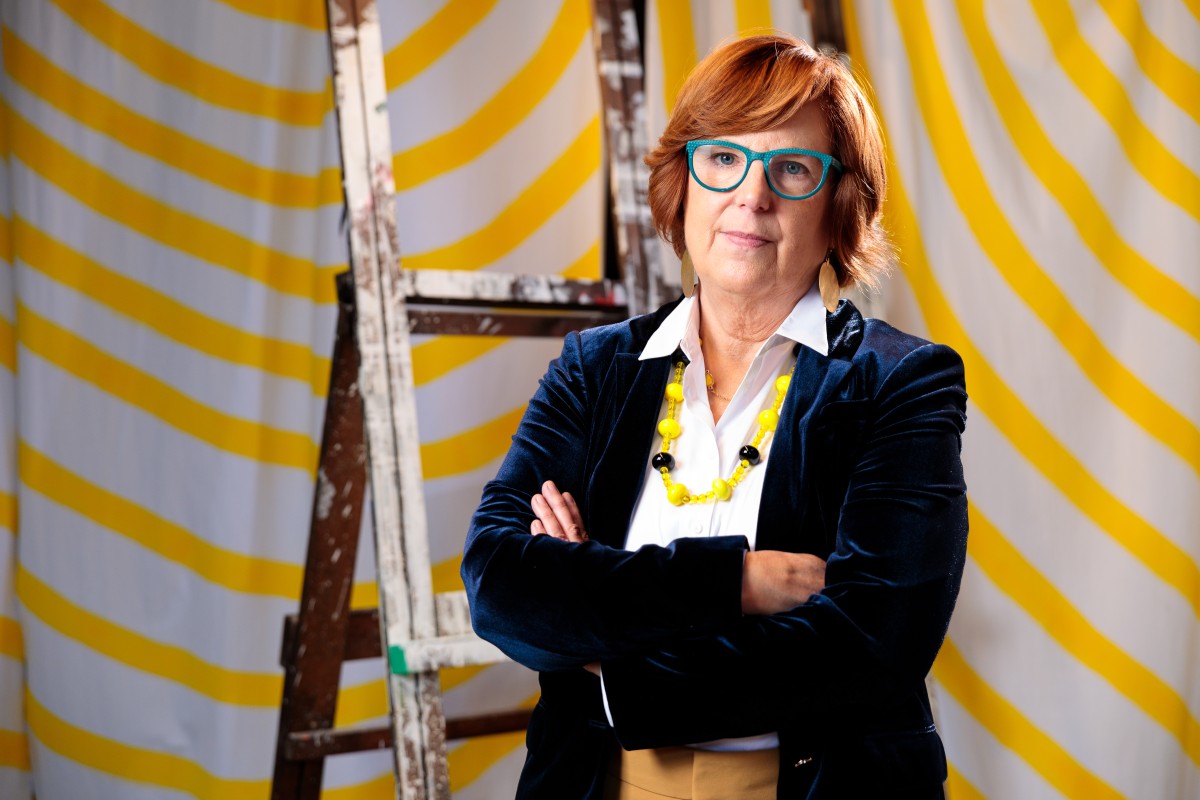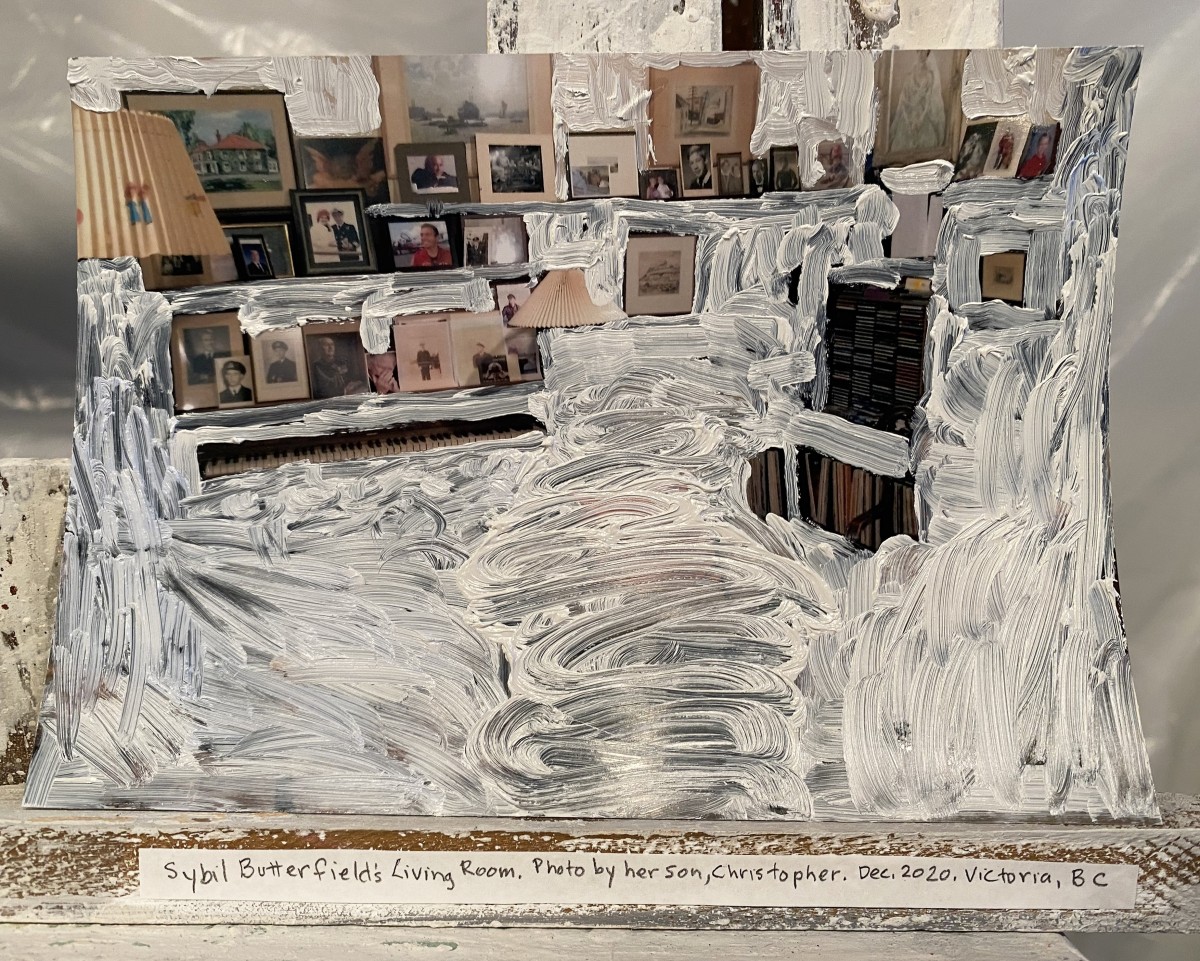Her way between things
Sandra Meigs marks a new chapter with her first book, a revealing portrait of her life and work to date.

The Way Between Things, 2021. Image courtesy of Sandra Meigs.
From the hands of one of Canada’s most inventive and expressive artists comes a unique vision of what an artist monograph might be. An enthusiastic mix of archival materials, critical reflection and memoir, The Way Between Things: The Art of Sandra Meigs is a wide-ranging tour through the life and work of one of Canada’s foremost artists, connecting experiences past and present, with broad hints to the future. Co-authored by Sandra Meigs and Helen Marzolf (curator, writer and former director of the artist-run centre Open Space in Victoria, B.C.), The Way Between Things offers an exciting vehicle for how art can be understood, and the plethora of voices that inform it.
Based in Hamilton, Meigs may be familiar to AGO visitors for her 2017 Gershon Iskowitz Prize exhibition, Room for Mystics (with Christopher Butterfield), an immersive environment of painting and enchantment, punctuated daily at 11 am by the sounds of a live brass band. Her work is included in the AGO Collection and in museums and private collections across the country.
We were fortunate to talk with Sandra Meigs about putting her art onto the page.
AGOinsider: What inspired you to publish a book about your art?
Meigs: One day it came to me that all the directions and veins that my work has traveled throughout the years has always headed back to the same place, the heart, the inner essence of the psyche and our relationship to what is outside of our bodies. What paths the heart of the work has taken!
So, I thought of four chapters for a book. The chapters explore The Gothic, Nature Through Narrative, The Slapstick, and Awakening, all themes that I have constantly revisited, though not sequentially. This structure was my inspiration, a lens through which one can see that all the work is connected, yet surprising and distinct.
AGOinsider: What inspired you to punctuate this otherwise thematic account with such deeply personal, biographical stories?
Meigs: Artists are astute witnesses. Different stages of childhood yield different perspectives on the world. For example, to a five-year-old, things are viable, immediate and internal, full of self. As a 10-year-old, things have wider relationships but without political, social or environmental contexts. To be able to capture how moments in these times are witnessed, strikes me as potentially compelling. Having moved around a lot as a child, I saw a lot. I also thought the stories would complement Helen’s insight into the work. For example, in “The Southern Wedding 1961,” my family was thrown out of a church because my drunken father cursed everyone and staggered down the aisle while the wedding ceremony was in progress. I always remember this like the slapstick comedies I watched on TV, and voilà, slapstick made its way into my work in a big way.
AGOinsider: Helen Marzoff, your co-author, peppers her descriptions of your work with quotes by others. Do any of these comments stand out to you as being particularly impactful?
Meigs: Helen’s writing in itself is full of quotable gems. She very thoroughly researched and dug up quite a lot of old writing about the work. She also did phone interviews with people that remembered work 40 years later. Some of the things that stand out to me are:
“A table as protagonist! A table as malevolent force. Wow! That struck me as highly unconventional.” Robert Fones on The Maelstrom
“Popeye’s cartoon body is a metaphor for the kind of aberrant psychotic behaviour perfectly acceptable in the cartoon world. Yet, however distorted his body and psychotic his life, Popeye retains both his sense of humour and his humanity.” Elke Towne on The Room of 1,000 Paintings
“... recounts the tale of a young woman living in extreme conditions of an ecologically threatened environment — she keeps her baby, a newborn, in a carton on the porch. She yearns for a man, across the dried-up river, who is no longer available to her.” Lisa Baldissera on Swoon
AGOinsider: The epilogue features an image of a new work, World of Interiors: A Pandemic Project. Why add it to the epilogue? Is the series ongoing?
Meigs: I think Helen really liked the images and she wanted to highlight the pandemic work, as we had completed all the work for the book during the pandemic.
This series started because during the pandemic I had a mournful desire to visit my friends’ homes. (Didn’t we all?). So, I asked a few friends to send me their own interior shots of their homes. At first, I thought I would use them as references for paintings. But I quickly realized that the photos were way more interesting than anything I could do with them pictorially. So, I started to lovingly caress certain objects in the glossy photo prints by sealing them in with oil paint on the lovely slick surface. It felt like an act of love and yearning. Then I re-photographed the altered photos, keeping views into my studio around them. Hence, the friend and I were together after all, in my studio, my favourite place.
AGOinsider: Finally, your excellent Instagram account has been full of lovely plein air sketches and drawings this past summer. Does nature offer that titular 'way between things', or is it the thing we should aim for?
Meigs: The current plein air gouaches are studies for new paintings exploring Earth’s sublime rage. The studies were made during hiking trips in Ontario Provincial parks. And I continue to make them. In a way, this new work IS about a way between things: Grief and Joy.
Feelings about the unfathomably rapid loss of species, the unimaginable rage of fires and floods and catastrophic storms, the rise in temperatures is sad beyond words. But acknowledgement is important because it brings us together with Earth. We mourn together. At the same time, we must not lose sight of the incredible joy we feel when the wind caresses our cheeks, when we hear a cardinal call, or listen to a stream babble and see the sun set behind a hillside. We cannot reconcile these two things, but we CAN and DO feel them. Sometimes we may even sit between them.
The Way Between Things: The Art of Sandra Meigs, is available now. Stay tuned to AGOinsider for more conversations and insights from artists around the world.


